Curb Appeal: Where the Store Begins — Or Ends
The fact is, for all independent garden centers, the store is the most important product; that place, in its totality physical environment, atmosphere, product mix is the branded product on which the independent garden center hangs its individuality it’s niche. The customer chooses the independent garden center as her brand of choice first on the basis of promise she believes the independent offers an enhanced prospect for gardening success because they know more about gardening than either the mass merchandiser or the individual consumer. The other half of the brand, however, is personality. That’s where the store as a place assumes branding supremacy.
And, the store begins when the customer can see it from her car that’s at the curb. The store ends only when the customer has exited the parking lot, again at the curb. Whether destination or drive-by, your brand both promise and personality begins at the curb. Worse still, the store can end at the curb without the customer ever entering the parking lot. If the customer is unimpressed with the store from the street, she may remain the “invisible customer,” never making the turn into the parking lot. I often hear garden center owners moaning about customer’s telling them “I never knew you were here,” or “I had no idea you were this large.” The curb has communicated but it has not appealed.
Establishing and Meeting Expectations
Whether your garden center is nestled at the end of a winding country road or adjacent to a six-lane highway, your store’s personality begins with the customer’s view from the car window. In the case of the destination store, the key is meeting expectations. In the case of the busy highway, the primary issue is creating urgency.
In the first case, the customer who has driven to the end of that winding road must get what he or she expected (and more), or there may never be a second trip. In the second case, the commuter must be convinced to apply the brakes. How you as a retailer accomplish either of these diverse goals amounts to your initial merchandising contact and will influence the customer’s decision to visit the store, make a purchase and return to the store.
Let’s start with the destination garden center. Now, don’t all you beside-the-busy-highway retailers skip this section. Meeting the customer’s expectations is an objective of all retailers who have any competition and who doesn’t. A friend of mine in the radio business addressed the importance of meeting customer expectation this way: “If it says beans on the can, there better be beans in the can.” He meant, radio station customers have a choice of several buttons on the car radio that translate to different listening formats. When a customer pushes one of the buttons on his or her radio, it’s done with some expectation of what kind of sound will result country, oldies, rap, hard rock, talk, easy listening, sports, etc. My very successful radio station manager/friend believed the customer who did not have that expectation met on a regular basis would simply stop pushing the button.
When customers take the time and effort to visit a destination garden center, they come with expectations created by both the local shopping mall and through some form of information about the specific store a newspaper ad, radio or TV commercial, garden show displays or even word of mouth. Customers who have just left the local Crate & Barrel store or some other upscale mall store bring a level of expectation that has nothing to do with garden centers as such. It is this prior level of expectation that has led some retailers to value the opportunity to have customers first visit the local
mass merchandiser’s garden center department. The independent retailer’s elevated product quality and product presentation may serve to enhance the perceived value of the product in the eyes of the consumer newly arrived from the box store. Whatever the prior shopping experience, when the consumer arrives at your store, the first and most important impression is whether your store meets or exceeds expectation.
Structures
The garden center structure itself is part of the curb appeal of the store. That doesn’t mean the structure must be a gable or hoop greenhouse, although that structure certainly conveys meaning. By surveying the visual appeal of the store from the street, you can evaluate just how much impact your structure has on the street. Figure out just how far from your store entrance the store is actually visible. Then, photograph the front of your store. A photo reveals more to your eye than the actual view of the store. Ask yourself (and your staff) if the store looks appealing. Remember, you’re asking this question at every season your store is open for business not just in the spring. And remember, product in the parking lot is not a sign. It’s just product deteriorating in the parking lot. Using plants to camouflage the front of the store only works when you have lots of product and the weather is perfect. What happens in the heat of summer or the dark of winter when you can’t use product?
One of the most effective streetside structures is a white fence. This linear structure can define the entire frontage of the garden center and remains an effective cue in all seasons of the year. A fence also provides much-needed structure for additional permanent and pot-in-pot color installations. A fence can double as the dividing line in a streetside garden that also works as a walking display garden: The streetside of the fence is big color that talks to the passing traffic while the parking lot side talks to customers after they park. The fence keeps customers (and their children) inside the safety of the interior of the garden center.
The style of fence you select for your garden center streetside merchandiser, and even whether the fence is a solid line structure or a series of structures, is a matter of image and security. The material for the fence is consistent: Select some color of the new resin fencing that is so readily available. The fence is a sign, not a decoration, so maintenance and visibility are the key issues. If your garden center is cozy and country, install a picket-style fence. If your garden center is more sophisticated, invest in brick peers with white inserts. Unlike wrought iron fences, plastic fences are both visible and maintenance free. White is the best all-around choice but other bright colors may fit into your overall design scheme. Whatever style fence you choose, do not install a fence (or any other structure) that must be painted. Paint is a maintenance negative in a garden center. The fence and the plantings that you design to talk to the street become a year-round visual cue to the customer driving by that he or she has arrived at your store and can apply the brakes.
Vehicular Entrances
The customer expects to be able to get into and out of your driveway easily and safely. That means, two cars must be able to pass and turn safely. A customer should not have to vie for space with a delivery truck or with vehicles from your landscape division or from any other landscape/wholesale customer. A delivery entrance is an essential aspect of retail. The next time you visit one of the very successful outlet malls, notice the careful design that creates a separate entrance for delivery of merchandise. If you have a landscape division or if you sell to landscape companies, these businesses should be completely separate from your retail business. That means a separate entrance for trucks and a separate area to transact business.
Several possible solutions to driveway congestion include one-way drives with entrance and exit options or widening all existing driveway entrances. Especially busy highways demand consideration for adding turn lanes or exits in order for customers to avoid turning across busy traffic. In consumer surveys, traffic as a factor in store convenience remains a major issue in all segments of retail. As the customer base ages, traffic and store accessibility will become even greater factor in consumer’s decisions about where to shop. First and foremost, the driveway must be visible. After that, accessibility and safety also influence customer use.
Streetside Signage
Streetside signage consists of both product and information presentation. Once the issues of vehicular flow are addressed and you know exactly how your customers drive to and enter your business, you can address the issue of “picture windows” to display merchandise and provide information.
The picture window, although important to the initial impression and customer expectation of the destination garden center, is an equally essential element of the drive-by garden center because it is the key to enticing the customer to apply the brakes. Getting the customer to look is key to getting the customer to stop. Remember, we follow our eyes. To accomplish that, the drive-by garden center must interrupt the clutter of the roadside environment. No matter how lovely, that interruption can’t be accomplished with pretty plantings alone. The interruption of the roadside clutter is accomplished most effectively with larger-than-life, high contrast color installations. That’s not always plants.
A horizontal swath of green can be an effective streetside sign, especially if you sell turf grass. Plantings must be treated as signs not as gardens. A long swath of seasonal color can be very effective. The last thing you want to create, however, is a garden. Gardens require maintenance. Create “signs” with bermed planting areas that include essential irrigation. Then, you can easily install large swaths of color either in-ground or pot-in-pot. The advantages of pot-in-pot cannot be over emphasized. Easy to install and remove, pot-in-pot plantings allow streetside plantings based on inventory.
Coordinating the planting “sign” with the fence “sign” can be an effective year-round street talker.
The other element of street talking that is essential to interrupting highway clutter is your sign. The primary use of a sign along a busy street is to announce “Stop! Turn Here!” Trying to do much more is a waste. Once again, the key is to create larger-than-life colors and shapes that communicate without needing much read time
An alternative to hard-to-read and hard-to-maintain changeable message boards is changeable banner signage. This system involves the installation of a series of permanent in-ground sign post holders, metal posts (fitted with permanent attachment hardware) that can be lifted in and out of the permanent in-ground holders and changeable banners installed seasonally. As with all signage, local ordinances govern the use of permanent or changeable signs.
Whatever style of sign you choose, remember that readability from the customer’s seat in a passing car is the first requirement. Be certain your streetside signs are first, readable and second, convey the message both information and image that you intend.
Combining appealing structures, convenient vehicular entrances and effective streetside signage results in consistent curb appeal that reinforces your customer’s choice to select your store in all selling seasons.

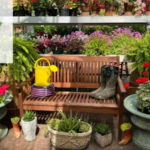
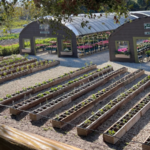
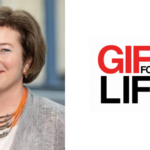

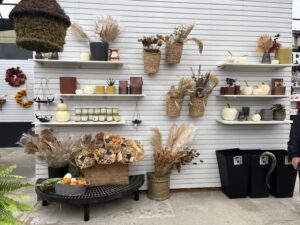
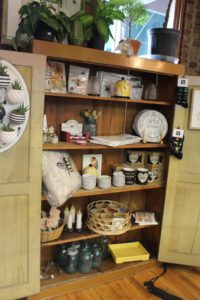
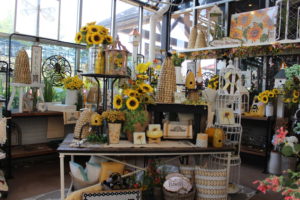
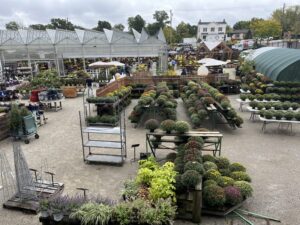
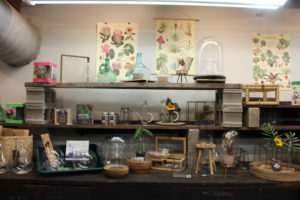
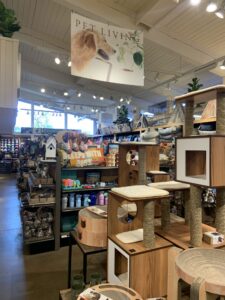

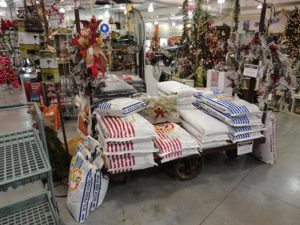
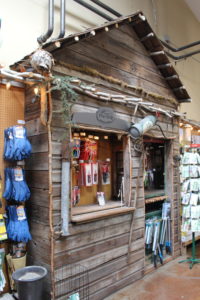
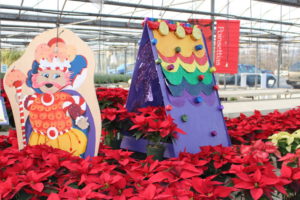
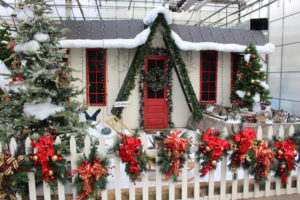
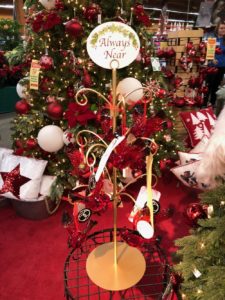
 Videos
Videos





